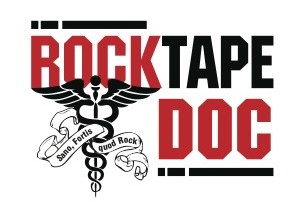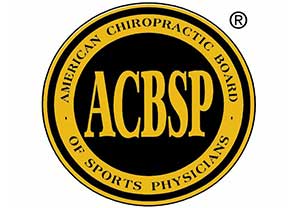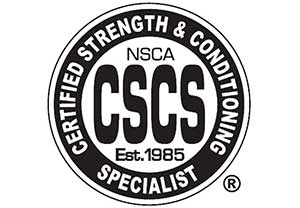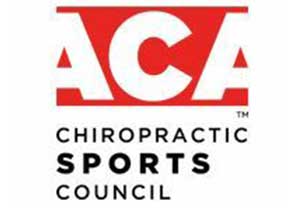
People of all ages can enjoy chiropractic care at our office. However, sometimes people are unaware of how both pregnant women and children can benefit from chiropractic. Often areas that have been physically stressed from spinal trauma during labor and delivery and later with normal childhood activities. Maintaining good spinal and nervous system health is especially important as the body grows and changes. We may naturally think to put ice on a bump or bandage on a bruise, but with the balance of a growing skeleton may initially seem invisible. Chiropractic childhood spinal checkups are one way to identify and prevent some health conditions they may later see as adults.
Pregnancy is a unique time when the body changes dramatically within a relatively short period. That means a woman’s posture, weight, and physiology are challenged. In many cases I work with a woman that has been symptom free before her pregnancy. During the months following a new pregnancy, these are my general recommendations.
IN THE FIRST TRIMESTER
- I usually advise my patients not change anything with their chiropractic routine
- Call in if you need to come sooner
- Take a high-quality prenatal vitamin and omega-3 supplement
- Continue or implement light to moderate exercise that makes you feel safe and empowered
IN THE SECOND TRIMESTER
- Be sure to book a chiropractic appointment in advance about four weeks apart
- Feel free to come sooner if you are having symptoms that make you uncomfortable
- Consider investing in a prenatal sacroiliac belt
- Schedule massage appointments with a therapist trained in treating pregnant women
- Continue with light to moderate exercise with more emphasis on modified core and hip strength
- Look into prenatal yoga classes that offer a supportive practice for your changing body
- Consider finding a doula for birth and post partum support
IN THE THIRD TRIMESTER
- Increase your chiropractic office visits to twice a month
- Call in if something shifts in your body or you have concerns about your baby being breached
- Decrease the intensity of your workouts
- Continue with prenatal massages and yoga practice
Specialized techniques are also often incorporated during the care of the pregnant patient. Larry Webster, DC created Webster Technique. He was also the founder of the International Chiropractic Pediatric Association and developed a specific protocol that addresses the alignment of the sacrum and the way it can affect the torsion of pelvic muscles and ligaments. It has been reported through obstetric and chiropractic literature that the proper pelvic neuro-biomechanics can ease the birthing process and reduce intrauterine constraints. I usually use Webster Technique in the second trimester to ensure optimal fetal position and reduce round ligament pain. There are so many ways your chiropractor can support your pregnancy! Some of the other benefits of chiropractic care during pregnancy include:
- Reducing the spinal imbalances that may lead to painful conditions like sciatica
- Maintaining alignment that will support a regular exercise routine
- Decrease the need for medications for common aches and pains like body stiffness and tension headaches
- Offering natural methods of addressing acid reflux
- Nutritional advise
- Reducing uterine constraint and round ligament pain
- Treating pubic symphysis pain
- A low-cost and gentle form of self-care
IN THE FOURTH TRIMESTER (POSTPARTUM) AND BEYOND
Follow-up care with your chiropractor in the Fourth Trimester can benefit both mother and baby. This is a time of transition where hormones are shifting and our connective tissue is healing. You may be sleep deprived and hurting in new places or you may have tremendous relief from aliments during your pregnancy. Common postpartum complaints include: headaches, neck and shoulder tension, and upper and lower back pain. All chiropractic treatments, stretches and adjustments can be modified for the patient's needs, even if you had a cesarean section. I encourage my patients to come as soon as they are ready.
- Continue taking your prenatal vitamins
- Schedule a chiropractic check up within the first 4 weeks
- Get outdoors when possible
- Consider mental emotional support with a therapist or postpartum doula
- Marbles Wellness (Ballwin & University City)
- Consider establishing yourself with a Pelvic Floor Physical Therapist
- Legacy Physical Therapy (South St. Louis County & St. Peters)
Common Questions About Children and Chiropractic
How effective is chiropractic care for children?
Most chiropractors, even those who do not specialize in pediatric chiropractic, safely and effectively adjust both younger children and teens. Without efficacy, parents would have long ceased seeking a Doctor of Chiropractic for their children. A 1992 survey showed that the most common conditions for which children visit a chiropractor are: earaches, neck pain, check-up, headache, upper respiratory, low back pain, allergies, asthma, enuresis, and thoracic pain. Other reasons are ADD and ADHD, colic, torticollis, insomnia, growing pains, and persistent crying in infants.
How do most children react to an adjustment?
Most children must become comfortable with their family chiropractor first. We often recommend that they come with you to an appointment and into the treatment room so that they have an opportunity to experience the relaxed environment and friendly staff. Both children and teens often laugh or smile when they have an adjustment. For an anxious child we usually get the parent involved by holding them or playing games. People are often surprised at the various techniques available to make the experience so easy and how their child looks forward to their visits.
Why should I bring my child for chiropractic care if they are not ‘sick’?
Chiropractors do not treat diseases; they help to correct spinal misalignments that can cause health problems. Through regular adjustments, and counseling on proper nutrition, exercise, and posture, the chiropractor can help you raise a structurally and functionally sound child.
Many people forget that the leading cause for illness and injury in kids is accidents. For example, they say that most of us will fall more before the age of 4 than at any other time in our life. Another example of spinal stress includes athletic activities. Think about how the “sack” of a quarterback could twist a young spine or how pitching a ball can throw a vertebra out of alignment. These underlying injuries, if left uncorrected, can cause serious problems as the child grows into adulthood. Your family chiropractor can also help improve performance on and off the field by helping the body to function at its best.
Throughout the lifecycle, various stressors can lead to imbalances in the body. For example, when a chiropractor finds a vertebral subluxation in your child, it is a response to a stressor. Unaddressed stress can and at some point will lead to an expression of symptoms. Here are some physical mental/emotional and chemical stressors in infants, children, and teens.
| PHYSICAL STRESS | MENTAL/EMOTIONAL STRESS | CHEMICAL STRESS |
| extended periods in baby seats | crying it out | toxic household products |
| separation anxiety | bullying | food dye |
| falls | sleep deprivation | hormones in food |
| posture from gaming, texting & tablets | pressure to succeed | incongruent foods |
When is the best time to start my child with chiropractic care?
This is a personal decision. If you want to give your child the best opportunity for healing you should consider a conservative, drugless approach to health care first. It is essential to have a chiropractic exam during the first year of a child’s life, as spinal trauma can occur during birth, and from tumbles while learning to sit up or walk. Don't forget your child’s spine grows almost 50% in length during the first year! This kind of tremendous growth and developmental changes make a complete chiropractic examination so important in the early stages of a child’s life. I suggest that most patients have their children checked at least once a year, and consider quarterly check-ups to optimal spinal maintenance. Instead of allowing a child to grow into dysfunctional movement patterns or endure unnecessary stress on their nervous system, it is better to identify minor problems before they become big ones. The earlier a problem is identified and corrected, the less likely it will become a chronic or more serious problem later in life.






